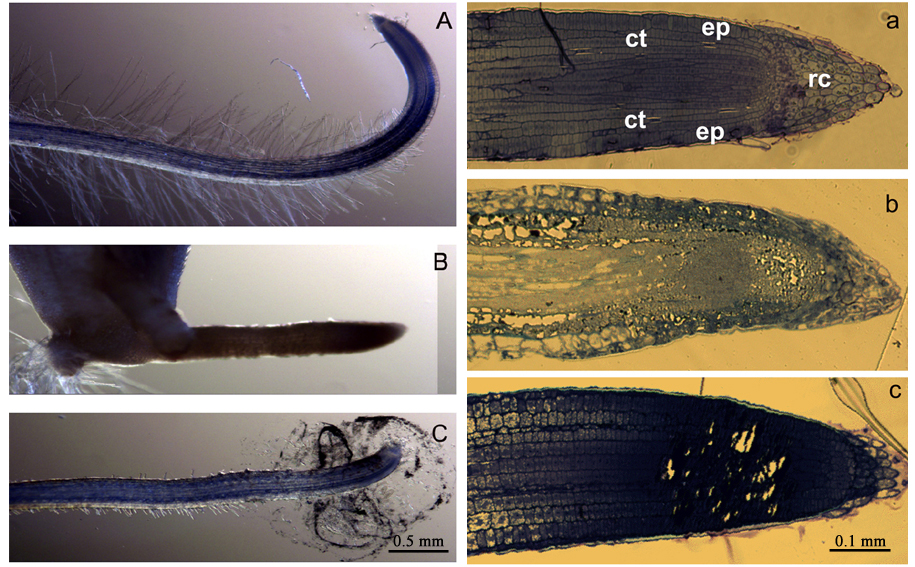Name:
Tell:
Email:
Organization:
Study from Wuhan Botanical Garden, CAS Found Phytotoxicity of Silver Nanoparticles Is Attributed to the Nanoparticles Themselves
2011-03-25
Recently, Dr Liyan Yin from Wuhan Botanical Garden, CAS and her colleges at Duke University found phytotoxicity of silver nanoparticles (AgNPs) is attributed to the nanoparticles themselves, not just to the effects of dissolved forms of Ag released from AgNPs.
Silver nanoparticles are one of the most widely used nanoparticles. However, the mechanisms of AgNP toxicity have not been fully elucidated. In particular, there is debate as to whether toxicity is specifically related to nanoparticles or is due to the effects of dissolved forms of Ag released from AgNPs. Dr Yin and her colleges at Duke University investigated the effect of AgNPs to Lolium multiflorum. They found that root and shoot Ag content increased with increasing AgNP exposures. AgNPs inhibited seedling growth. While exposed to 40 mg L-1 GA-coated AgNPs, seedlings failed to develop root hairs, had highly vacuolated and collapsed cortical cells and broken epidermis and rootcap. In contrast, seedlings exposed to identical concentrations of AgNO3 or supernatants of ultracentrifuged AgNP solutions showed no such abnormalities. AgNP toxicity was influenced by total NP surface area with smaller AgNPs (6 nm) more strongly affecting growth than did similar concentrations of larger (25 nm) NPs for a given mass. Cysteine (which binds Agt) mitigated the effects of AgNO3 but did not reduce the toxicity of AgNP treatments. X-ray spectro-microscopy documented silver speciation within exposed roots and suggested that silver is oxidized within plant tissues. Collectively, this study suggests that growth inhibition and cell damage can be directly attributed either to the nanoparticles themselves or to the ability of AgNPs to deliver dissolved Ag to critical biotic receptors.
These results have been published in the journal Environmental science & technology (http://pubs.acs.org/doi/abs/10.1021/es103995x).

Light microscopic observation of Lolium multiflorum root hairs (A-C) and primary root tips (a-c) after 5 days exposure of DDI water. control (A and a), 40 mg L-1, 6 nm GA-coated AgNPs (B and b), and 40 mg L-1ionic silver (C and c). rc: rootcap; ep: epidermis; ct: cortex.